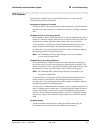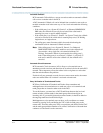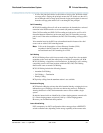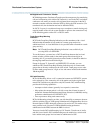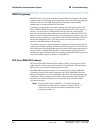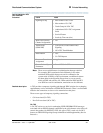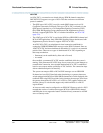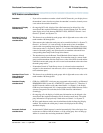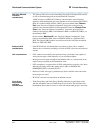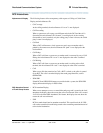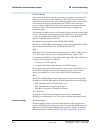
Distributed Communications System
321
Administration for Network Connectivity
555-233-504 — Issue 1 — April 2000 CID: 77730
B Private Networking
How to administer DCS
Over ISDN-PRI
D-channel
Note: There are several differences in administration between switches.
For example, PRI is translated a little differently in G3r when
traditional DCS and this feature are used in combination. On
systems with AUDIX in a DCS environment, an additional column
has been added to the Signaling Group form so you can specify
which AUDIX and switch to use. When traditional DCS and DCS
over ISDN are used in combination, translations are also different.
Detailed description A TSC provides a temporary signaling path through ISDN switches for exchanging
supplementary service information on ISDN-PRI D-channels. There is no B-channel
related to the connection; no data or voice transmissions take place.
There are two types of temporary signaling connections:
• Call Associated (CA-TSC)
• Non-Call Associated (NCA-TSC)
CA-TSC
A CA-TSC refers to a service for exchanging USER INFORMATION messages
associated with an ISDN B-channel connection by the call reference value of the call
control data packets. On DEFINITY ECS, this type of TSC is used only for DCS
features on ISDN-PRI Signaling Groups administered with Supplementary Service
Protocol a.
Form Field
Signaling Group
• Max number of NCA TSC
• Max number of CA TSC
• Trunk Group for NCA TSC
• Administered NCA TSC Assignment
fields
• Service/Feature
• Inactivity Time-out (min)
ISDN TSC Gateway
Channel Assignments
• All
Trunk Group
(ISDN-PRI)
• Used for DCS Node Number DCS
Signaling
• NCA TSC Trunk Member
Route Pattern
• TSC
• CA TSC Request
Processor Channel
Assignment
• Application
Feature-Related System
Parameters
• Record TSCs for CDR



